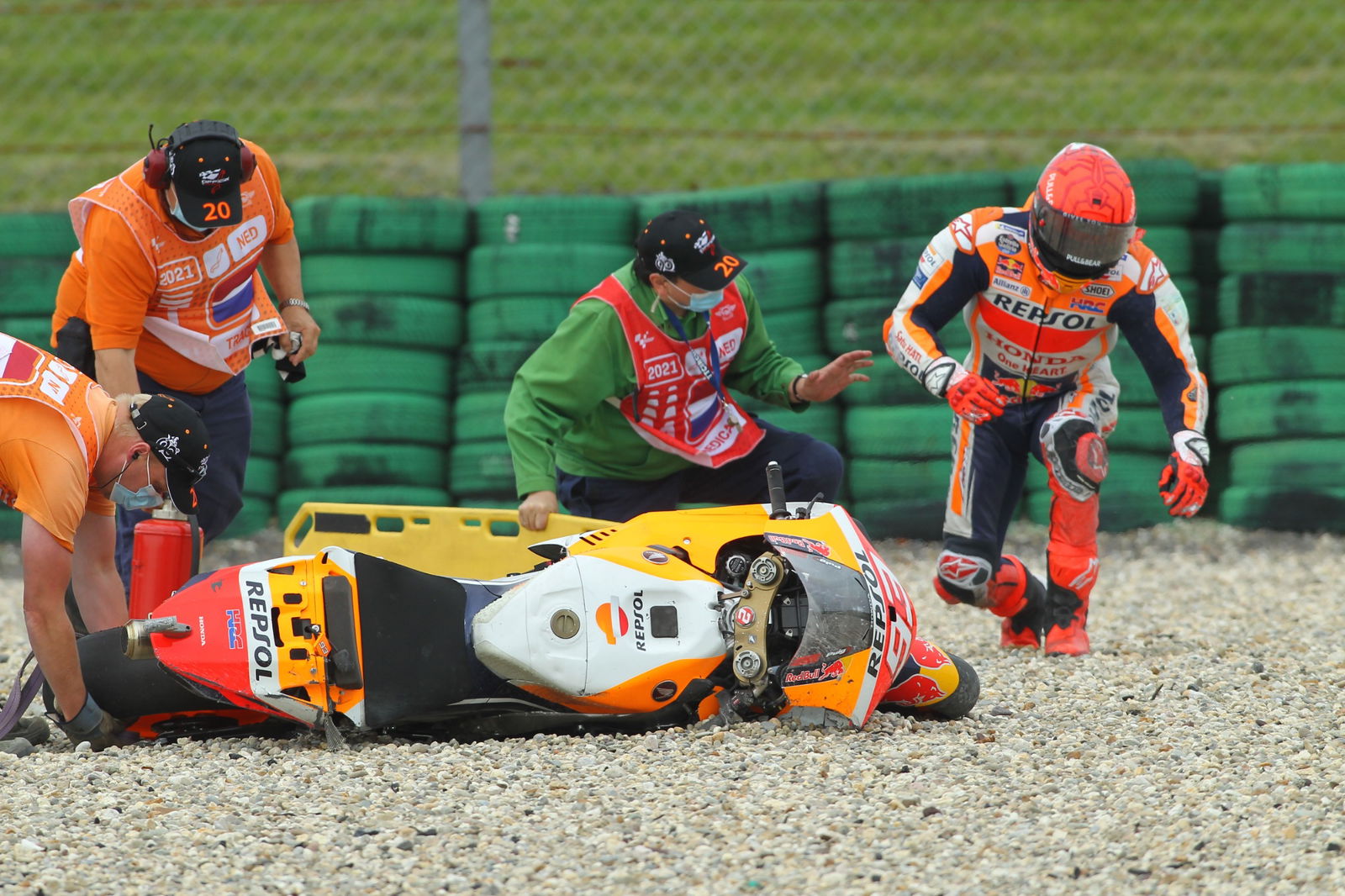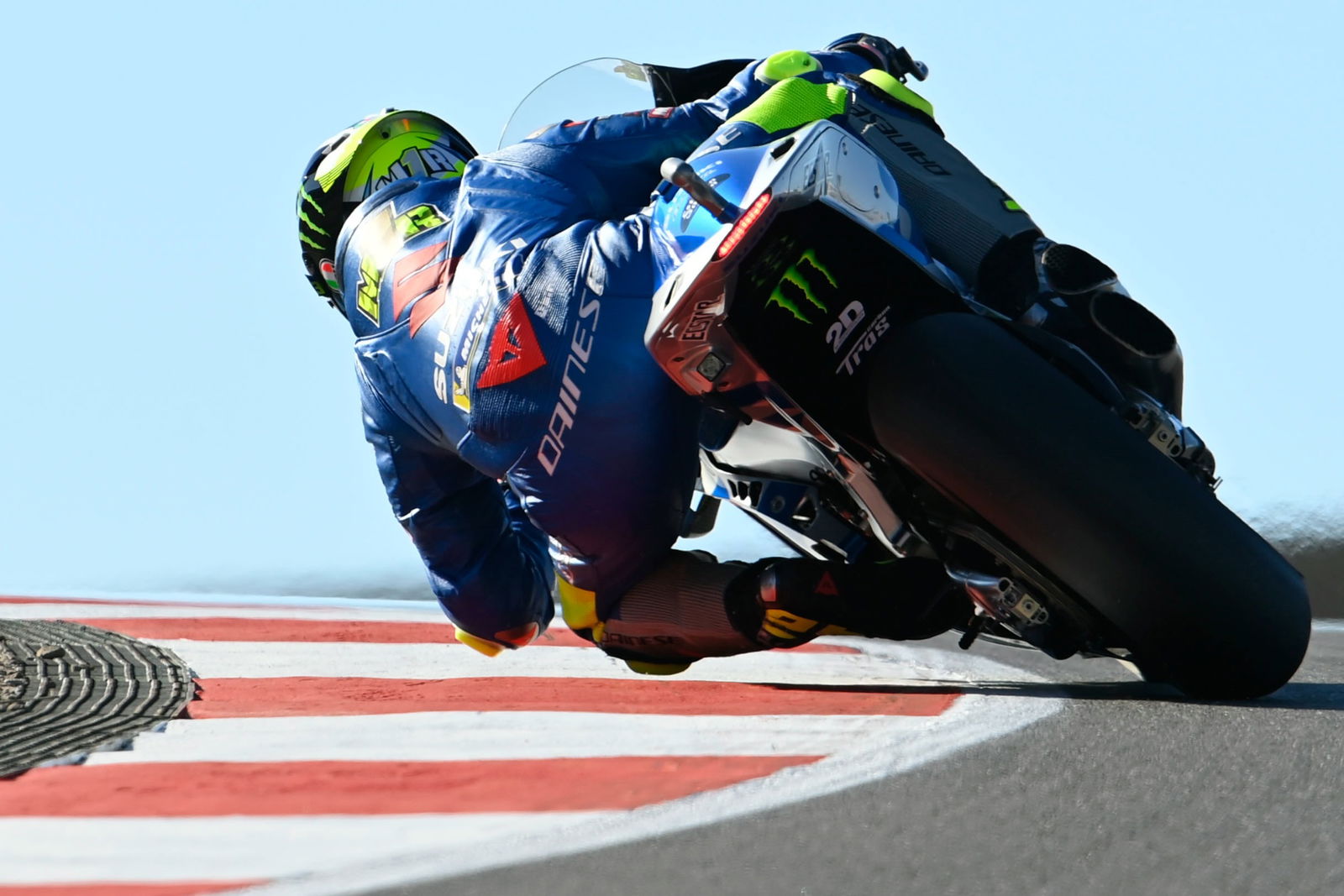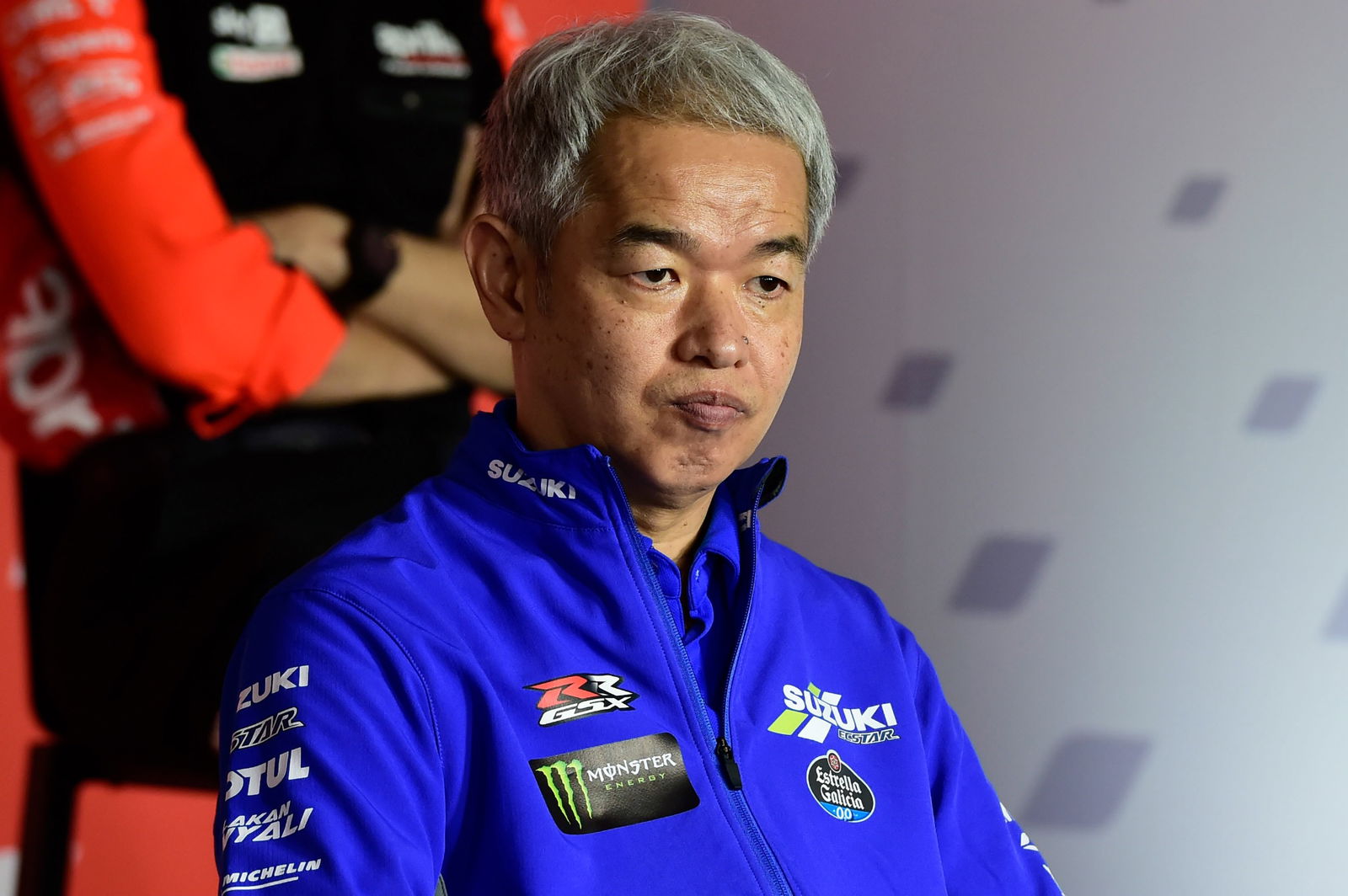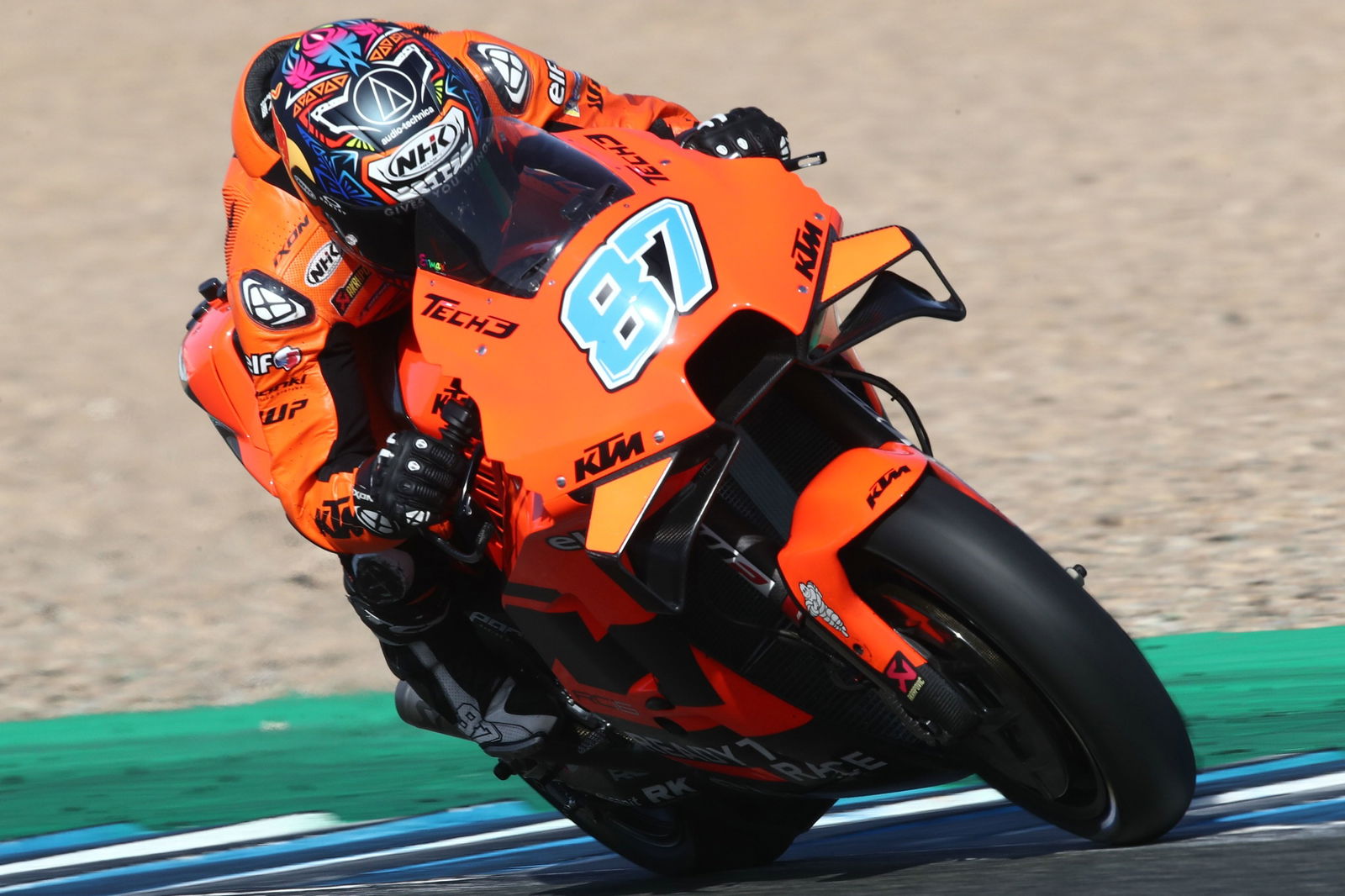Does MotoGP need 'slide control' after Pol Espargaro's huge Valencia highside?

Repsol Honda finished the MotoGP season without a single rider present in the Valencia race, after Pol Espargaro joined Marc Marquez on the sidelines.
Second fastest on Friday, Espargaro was catapulted from his RCV as he accelerated though the fast Turn 13 left-hander on Saturday morning.
The accident happened when the rear of Espargaro's bike slid out, causing his outside foot to rise from the footpeg, then gripped and kicked back the other way, creating an ever-worsening tank-slapper that eventually fired the Spaniard into the air.
"With the current electronics, the manufacturers are just able to tune one kind of spin, which is the centre spin," explained Espargaro, who missed the remainder of the Valencia weekend before returning a few days later at the Jerez test.
"When you pick up the bike, there is a spin, and the TC [traction control] is controlling this spin. But then we have another [kind of] slide, it's the side slide [when the bike is also leaned over].
"There is no function [to control it]. We are not allowed to use a function that has been used in the past, that the street bikes use.
"This is something that the manufacturers and the riders need to push to [be added to] the new rules for next year. To introduce this setting that we were working with already on the street bikes.
"It's not going to make the performance better, but it's going to avoid for example my crash, it's going to avoid for example the crash of Marc in Assen, the crash of Marc in Jerez in which he broke the humerus, the crash of Miller at one stage of the year, in a highside.
"The side slide is even more important than the spin, and we have no [way] to tune it. We have the tools, but we cannot use the tools to do it because it's illegal.
"This would be interesting to think about a little for next year."
Slide/Stability Control vs Traction Control
Espargaro raises many points, the key part of which is the difference between traction control and slide or stability control.
While the current traction control in the spec-electronics is concerned only with basic wheel spin, slide/stability control is more complicated, taking into account other factors such as lean angle, how sideways the bike is and the amount of forward momentum.
For example, if a bike is leaned over with a high rate of wheelspin but still driving forwards in a controlled manner, the slide/stability control might override the traction control and allow the spin to continue rather than suddenly cutting torque.

Marquez: The TC didn’t keep the slide
Aside from his own accident, Espargaro highlighted similar on-throttle high-lean highsides for Marquez at Jerez 2020 and Assen 2021. At Assen, Marquez also pointed the finger at the electronics, but said other manufacturers had found ways around the issue.
"There was another rider in front of me and I was doing exactly the same as he did or even slower," Marquez said after his Friday practice fall, from which he escaped sore but uninjured.
"But I am already pushing a lot to HRC. We cannot have these kinds of crashes. In those kind of corners, we are against the electronics. The electronics are there to avoid this type of crashes."
"The thing is, only Honda riders have these kinds of highsides," he added. "In Portimao Alex and Pol. Here me. It was a similar crash in 2020 in Jerez.
"I was riding in the same way as the previous lap. But just the TC didn’t keep the slide. We need to understand the way to work with the electronics to avoid this kind of crash.
"But when you are doing the exact same thing as the other lap, with even less angle and you have a highside, then it’s because something is wrong."
Fortunately for the #93 he didn't have to wait long for a response, with Honda providing a 'solution' the following day.
"Yesterday I complained about the TC and today I received a new solution for the TC, which was working much better and was more safe," Marquez said.
Jack Miller: It sort of shuts the gas on you
The other rider named by Espargaro as suffering a similar kind of accident was Ducati's Jack Miller.
While understanding the scenario Espargaro was highlighting, where the traction control cuts the wheelspin at the 'wrong' moment, the Australian said it is nothing new.
"That side spin issue has been there for years," Miller said. "He's talking about the lateral slide basically, I've had a big highside for example in Austin in the triple right-handers on the Honda, same sort of thing.
"The bike thinks you have the right amount of spin level for how fast you are going. But what it doesn't work out is how sideways the bike is at that point. And it says 'okay that's too much spinning', sort of shuts the gas on you immediately and that's the worst thing you can possibly do in a big slide like that.
"But for example Casey had it [happen] some years ago when he broke his foot in Indianapolis [2012. The unified electronics were not introduced until 2016]. Exact same crash."

'When people say you can open full throttle in a corner, I invite them to try!'
Such accidents highlight the conflict faced by riders and engineers to ensure that the MotoGP electronics don’t cost them speed by needlessly cutting torque, but still 'step in' to prevent a big accident.
"When people talk about traction control, saying that nowadays in MotoGP you can open full throttle in the middle of the corner, I invite them to try! Because it's not that simple," smiled 2020 world champion Joan Mir.
"If the traction control is cutting, OK it's safer, but you don't move [forwards]. So it's better to be a little bit more free in that area. And we have to remember that OK, we have electronics, but this is a 300 horsepower bike, so it's not easy to control, for sure."
Mir agreed with Espargaro that a critical area is at full lean.
"In the maximum [lean] angle, if you don't go with care, you can make some big highside. But the truth is that if you use more traction control [to solve the problem], also you lose a lot of time."
Could Slide Control be added to MotoGP's ECU software?
The current workaround to counter such high-lean on-throttle accidents, without excessive use of 'normal' traction control, is by tweaking the engine maps. A softer or smoother torque delivery helps prevent the spin or slide developing to a dangerous level in the first place.
But should, as Espargaro suggests, a direct form of slide/stability control now be included in the ECU package?
A paddock expert with detailed knowledge of the unified software told Crash.net that - aside from doubting if slide/stability control would have prevented all of the accidents mentioned – its inclusion would be a huge change, resulting in factories with deeper pockets gaining a technical edge.
And although Espargaro feels the technology would only be a safety benefit, by allowing riders to get closer to the tyre limits, track performance would rise, at a time when machine speeds and lap times are getting continually quicker.
Nonetheless, while there appears to be no appetite from Dorna's side to alter the unified ECU functions (either adding or, as Casey Stoner would like, removing any features), the procedure in place means that if the MotoGP manufacturers (MSMA) were to unanimously request any type of change, it would be done.


